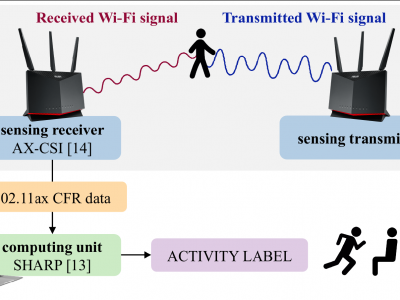Artificial Intelligence
The dataset includes channel frequency response (CFR) data collected through an IEEE 802.11ax device for human activity recognition. This is the first dataset for Wi-Fi sensing with the IEEE 802.11ax standard which is the most updated Wi-Fi version available in commercial devices. The dataset has been collected within a single environment considering a single person as the purpose of the study was to evaluate the impact of communication parameters on the performance of sensing algorithms.
- Categories:
 3084 Views
3084 ViewsThe rocket nose-cone shapes have been generated by blending few conic sections together (two conic sections in one) and the simulated against mach number regime from subsonic through transonic to supersonic. The aerodynamic drag coefficients have been recoded for each shape for each mach number.
- Categories:
 494 Views
494 Views
Open set face recognition on a small dataset, in terms of the amount of image samples per individual, is a hard and active area of study. This study investigates the open set face verification and face identification problems on the IFPLD dataset, which consists of only one frontal and one profile image per individual.
- Categories:
 147 Views
147 Views
This dataset contains trained weights to predict ECG abnormalities.
- Categories:
 50 Views
50 Views
This folder consists of codes, dataset, and models.
- Categories:
 20 Views
20 Views
- Categories:
 538 Views
538 Views
Perth-WA is the localization dataset that provides 6DoF annotations in 3D point cloud maps. The data comprises a LiDAR map of 4km square region of Perth Central Business District (CBD) in Western Australia. The scenes contain commercial structures, residential areas, food streets, complex routes, and hospital building etc.
- Categories:
 426 Views
426 ViewsThe ability to perceive human facial emotions is an essential feature of various multi-modal applications, especially in the intelligent human-computer interaction (HCI) area. In recent decades, considerable efforts have been put into researching automatic facial emotion recognition (FER). However, most of the existing FER methods only focus on either basic emotions such as the seven/eight categories (e.g., happiness, anger and surprise) or abstract dimensions (valence, arousal, etc.), while neglecting the fruitful nature of emotion statements.
- Categories:
 6698 Views
6698 Views
Human activity recognition (HAR) has attracted much attention. However, the existing HARs have shortcomings, such as few recognized activities, no identification, privacy leakage, and battery maintenance. Aiming at these shortcomings, this team has devised a body RFID skeleton that fully senses human activity and further proposes highly-accurate and fine-grained (total of 21 activities) HARs. The body RFID skeleton senses human activity by collecting tag response records of the skeleton node.
- Categories:
 31 Views
31 Views
Supplementary material for article "Learn to rotate: Part orientation for reducing support volume via generalizable reinforcement learning"
- Categories:
 125 Views
125 Views

